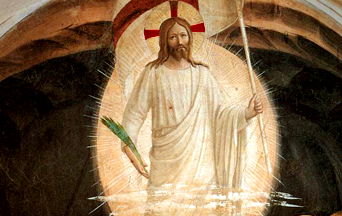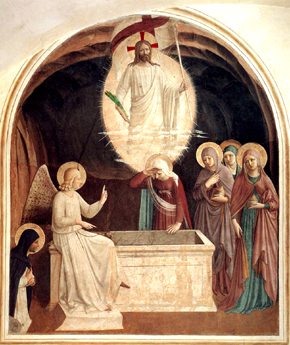
The regularity with which the various cycles of the liturgical year succeed one another in the Church’s calendar is truly an affirmation of the celestial majesty of the Church. She remains undisturbed no matter how much the events of human history change around her and despite the ups and downs of politics and finances as they continue their disorderly race, for she is above the caprices of human passions.
Above, yet not indifferent to them. When the sorrowful days of Holy Week are commemorated during times of tranquillity and happiness, the Church, like a solicitous mother, seeks to revive in her children a spirit of abnegation, a sense of heroic suffering, a spirit of renunciation of the triviality of everyday life, a total devotion to ideals that give life a higher meaning. Better than a “higher meaning,” these ideals give life the only meaning there is, the Christian one.
But the Church is not a mother just when she teaches us the great and austere mission of suffering. She is also a mother when, pain and annihilation having reached an extreme, she lets the light of Christian hope shine before our eyes, opening unto us the serene horizons that the virtue of confidence places before all true children of God.
Learn All About the Prophecies of Our Lady of Good Success About Our Times
Hence, even amid the sadness of the contemporary world, Holy Church uses the vibrant and most chaste joys of Easter to highlight the triumphal certainty that God is the Supreme Lord of all things, that His Christ is the King of Glory Who overcame death and crushed the devil, that His Church is the Queen of Immense Majesty, capable of rising again from amid the ruins, dissipating all darkness, and shining with an even more resplendent triumph precisely when the most terrible and most irremediable defeat seems to await her.
The joy and sorrow of the soul are a necessary result of love. When man has what he loves, he is joyful. When the object of his love is missing, he becomes sad.
Today men place all their love on superficial things. This is why they only become emotional about superficial things–above all personal misfortunes such as poor health, uncertain finances, ungrateful friends, the promotion that never comes, and so on. All these are secondary for the true Catholic who cares above all for the greater glory of God, the salvation of his own soul, and the exaltation of Holy Mother Church.
This is why the greatest suffering of the Catholic should be to see the Church in Her current condition.
Our Lady, Guardian of the Faith
There are so many reasons for sadness, some of which, perhaps, point to a not-so-distant catastrophe. However Christian hope continues. This reason for hope is taught in the very Easter celebration itself.
When Our Lord Jesus Christ died, the Jews sealed His tomb, and had soldiers placed to guard it. They thought the whole episode was all over.
In their wickedness, they had denied that Our Lord was the Son of God. They did not want to admit He was able to destroy the prison-sepulchre in which He lay, and above all, rise from the dead. Yet all this happened. Our Lord resurrected Himself without any human assistance, and by His orders the heavy sepulchral stone was effortlessly and quickly removed, as if it was a cloud. He resurrected.
and by His orders the heavy sepulchral stone was effortlessly and quickly removed, as if it was a cloud. He resurrected.
Likewise the immortal Church may appear to be abandoned, sullied and persecuted. She may lie under the sepulchral weight of the heaviest trials, and appear defeated. But She has within Herself a supernatural and interior strength, which comes from God, and that assures Her a victory as splendid as it is unlikely.
This is the great lesson of Easter. It is the great consolation of upright souls who love God’s Church: Christ died and rose again.
The immortal Church rises from Her trials, glorious like Christ, in the radiant dawn of His Resurrection.
The preceding article was originally published in O Legionário, No.660, on April 1, 1945. It has been translated and adapted for publication without the author’s revision. –Ed.
